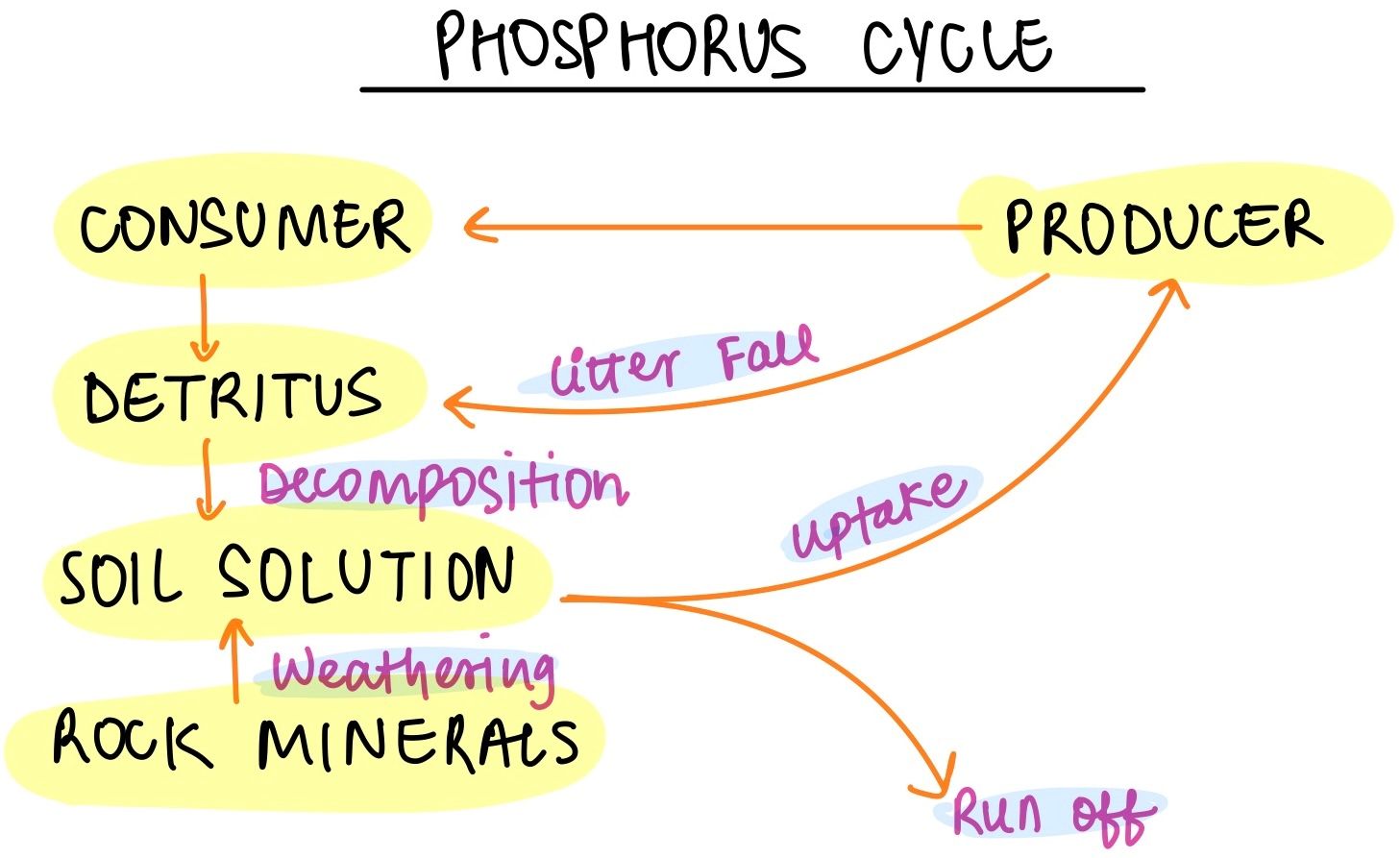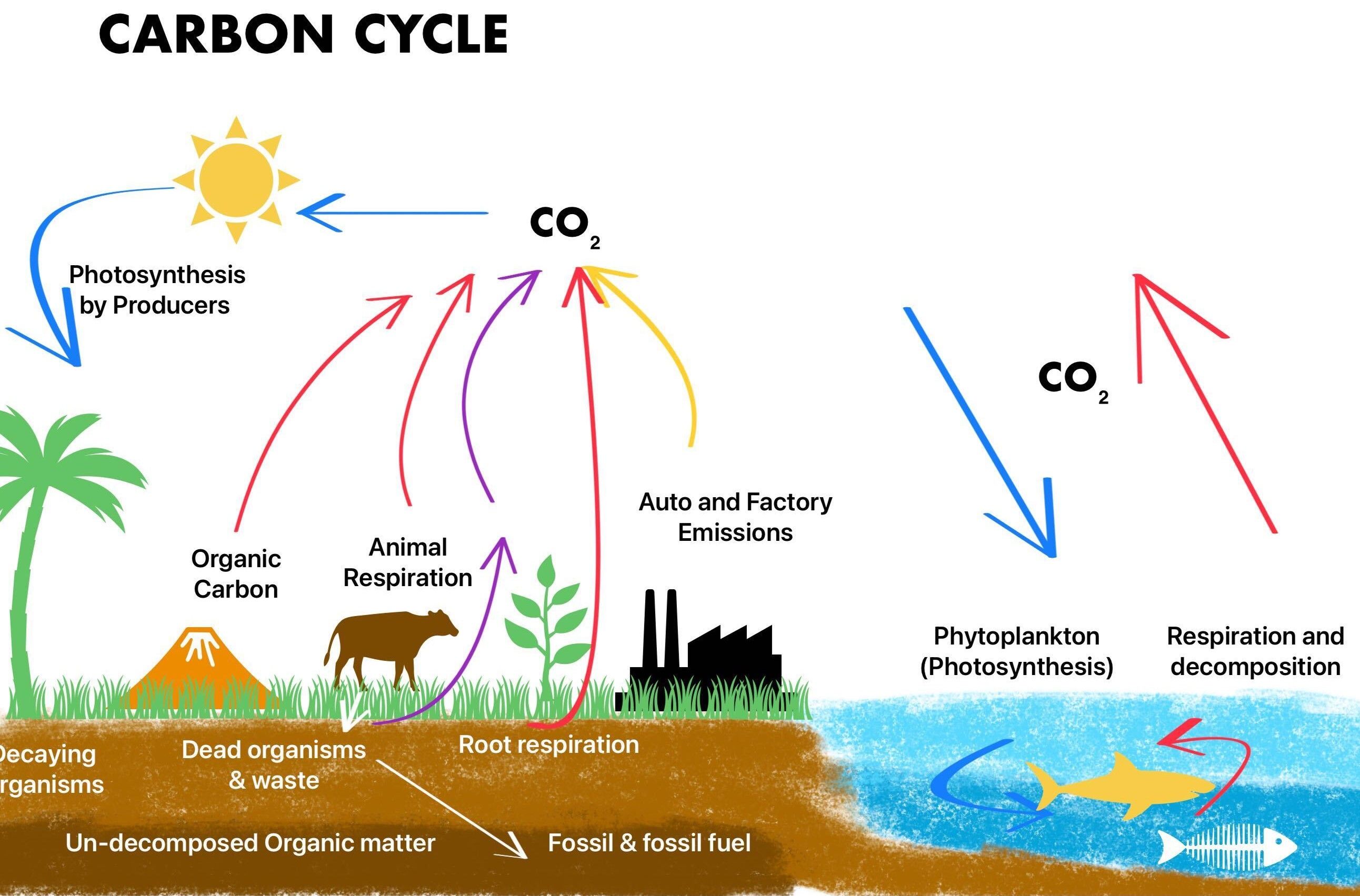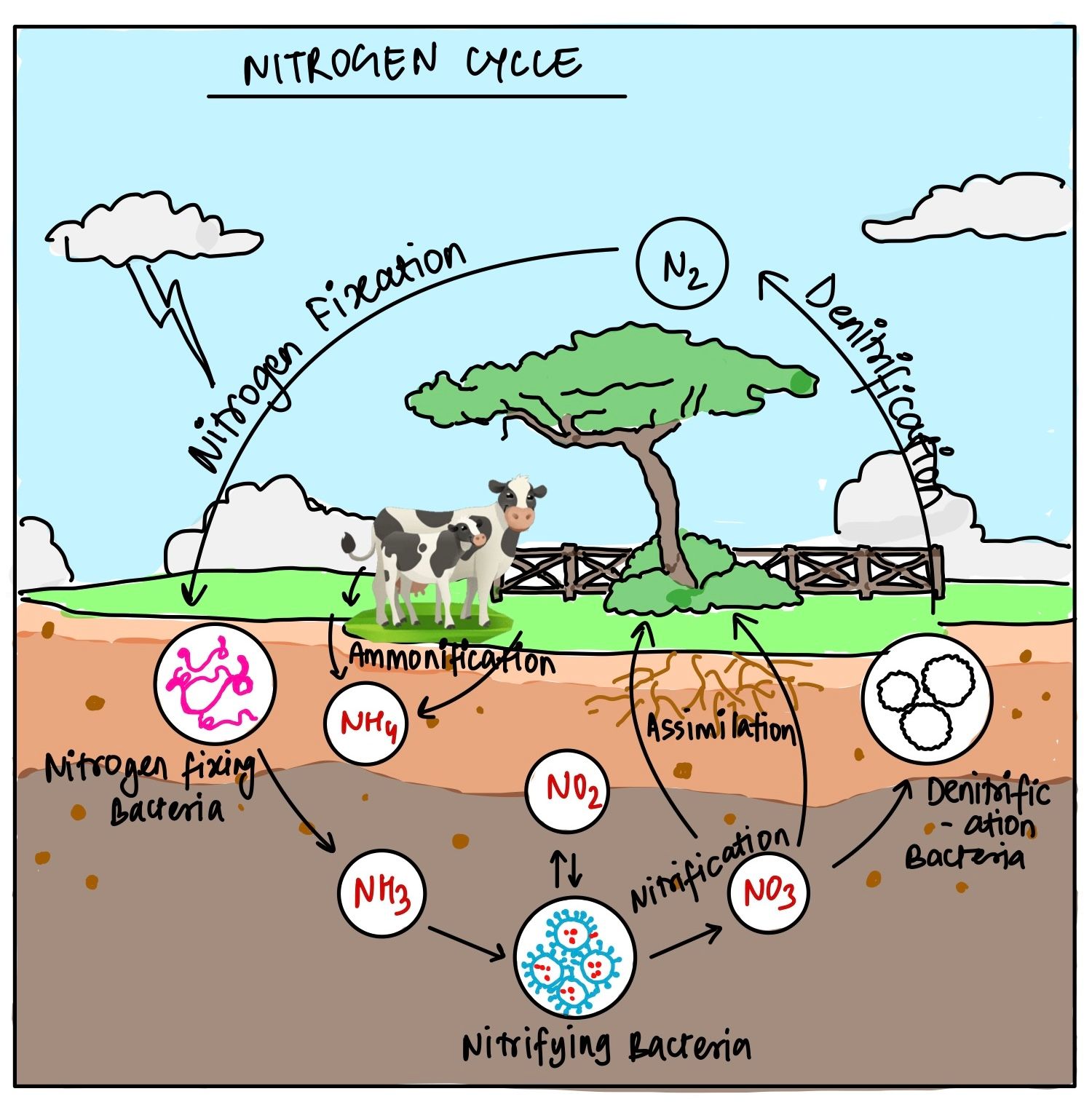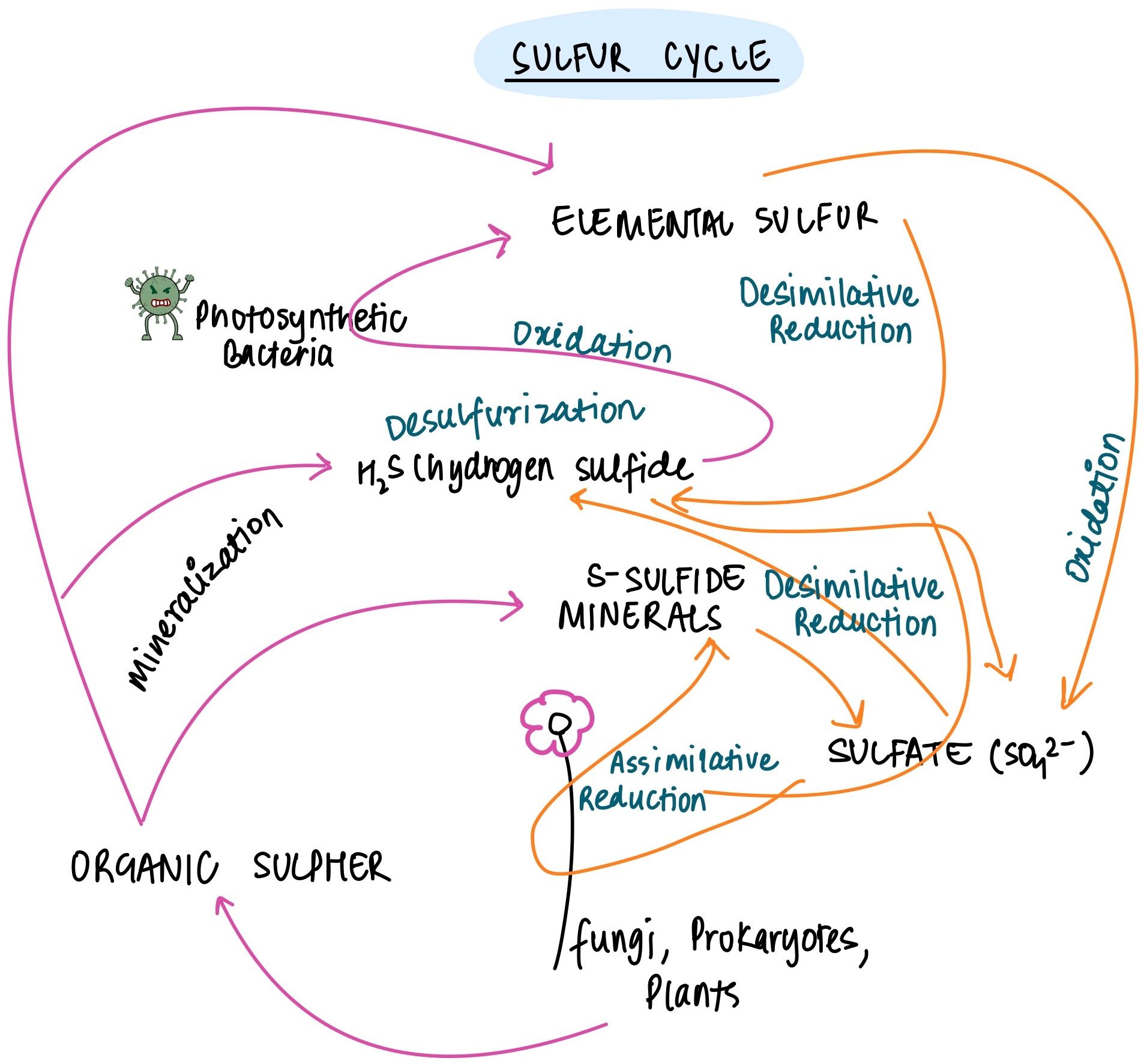The Phosphorus Cycle is unique among major biogeochemical cycles because it does not involve a gaseous phase. Instead, phosphorus primarily moves through the lithosphere (rocks), hydrosphere (water), and biosphere (organisms).
-
Weathering of Rocks: The main source of phosphorus in this cycle comes from the weathering of phosphate-rich rocks. Over time, geological processes break down these rocks, releasing phosphate ions (PO₄³⁻) into the soil and water.
-
Absorption by Plants: Plants absorb phosphorus from the soil, and it moves up the food chain as herbivores and carnivores consume plants and other organisms.
-
Return to the Soil: When organisms die, decomposition releases phosphorus back into the environment, where it can re-enter the cycle.
-
Carbon Cycle: The main source of carbon is atmospheric CO₂, released by respiration, combustion, and volcanic activity.
-
Nitrogen Cycle: Nitrogen is primarily cycled through the atmosphere, with nitrogen fixation (by bacteria) being a key process.
-
Sulphur Cycle: Sulfur is mainly released from volcanic eruptions, decaying organic matter, and fossil fuel combustion, rather than rock weathering.





